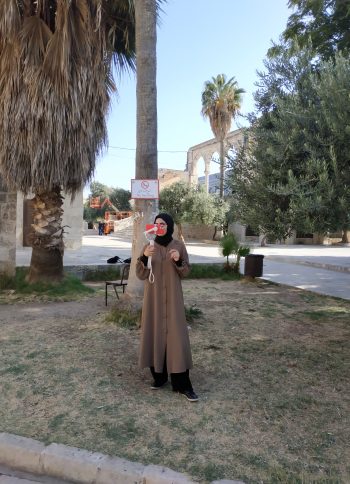Women (and Men) in East Jerusalem: Between Tradition and Change by Dr. Ramon
Main Publications Women (and Men) in East Jerusalem: Between Tradition and Change by Dr. Ramon

Abstract
The Arab population in East Jerusalem has undergone significant transformations in recent years, reflecting a transition from a traditional society to a modern and postmodern one, alongside a weakening of certain traditional social mechanisms. The primary factors driving these processes include increased exposure of East Jerusalem society to developments occurring in West Jerusalem and Israeli society in general, widespread access to social networks and new technological advancements, and substantial disconnection between East Jerusalem, the West
Bank, and the Palestinian Authority.
The main goal of this study – continuing my previous research, “Tradition, Crisis, and Renewal in East Jerusalem Society” 1 —is to focus on the status of women in East Jerusalem and the changes that have occurred from 1967 to the present. This includes exploring various aspects such as women’s roles in the leadership of East Jerusalem’s Palestinian society over the years, the education of girls within the schooling system, the pursuit of higher education by female graduates in Israeli and Palestinian institutions, women’s roles within marriage and household management, and the issue of women’s employment—a subject of great concern to policymakers and senior officials at both the municipal and governmental levels.
At first glance, this may not seem like a central issue in the history and present of East Jerusalem’s Palestinian society, which has long been characterized as a traditional-patriarchal society where women’s roles are marginal—or, more accurately, silenced—and thus rarely addressed in research. However, as in other areas, recent years have seen changes in this area, some of which remain under the radar. Women in East Jerusalem are more educated than men, the quality of many girls’ schools surpasses that of boys’ schools, and two-thirds of East Jerusalem high school graduates pursuing studies in Israeli higher education institutions are women. Some of these graduates (primarily the Hebrew University) have entered the Israeli labor market in various fields, including leading key aspects of the five-year economic and social development plan for East Jerusalem (following Government Decision 3790 of 2018) at both the municipal and 1 Amnon Ramon, Tradition, Crisis, and Renewal in East Jerusalem Society, Jerusalem: Jerusalem Institute for Policy Research, 2024 governmental levels.
Others have engaged in the activities of civil society organizations and local or foreign foundations operating in East Jerusalem. On the other hand, the employment rate of women in East Jerusalem remains low compared to that of Arab women within Israel (within the Green Line) and Israeli society in general. The high level of education among East Jerusalem women has not led to a significant integration into quality employment in the Israeli labor market. Barriers such as a lack of daycare centers and early childhood frameworks, accessibility challenges and inadequate public transportation, fears and concerns about working in West Jerusalem in a Jewish environment (especially during periods of security tensions and conflict), discrimination and marginalization, as well as the cultural-traditional characteristics of significant segments of the East Jerusalem population, are still very apparent in the social and economic reality of the city’s eastern part.
These conflicting trends will form the focal point of this research. As with other studies addressing women and gender-related aspects, examining women and their roles in East Jerusalem society will also provide insights into men, the complex relationships between the sexes, and the division of roles within the family and broader social institutions. A deeper understanding of these aspects will, I hope, allow us to view East Jerusalem society through a fresh and more nuanced lens and help develop insights that contribute to crafting a more differentiated and sophisticated policy toward East Jerusalem society in all its diversity, including its gender dimension.


